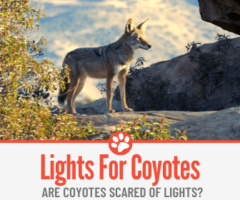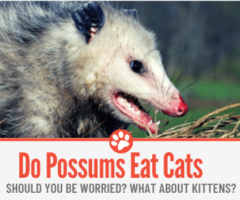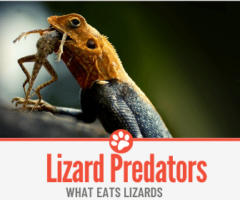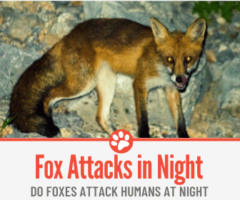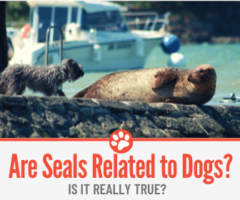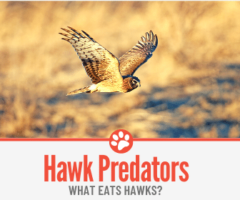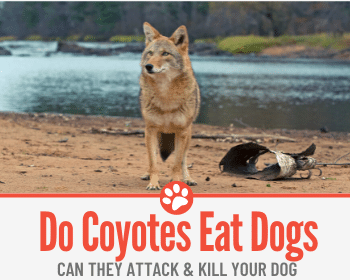 Today, around 44% of US households own a dog. With a rising number of coyotes and a rising number of pets, conflict seems inevitable.
Today, around 44% of US households own a dog. With a rising number of coyotes and a rising number of pets, conflict seems inevitable.
But should we be fearful for our dogs and should you be worried in case a Coyote Might attack your dog?
Are Coyotes known to be dangerous to dogs?
Do Coyotes Eat Dogs?
Yes there is a chance that a Coyote Can eat your dog, There have been cases of coyotes eating dogs, but this is fairly rare. A smaller dog is a more likely target, but again, this is rare. They are actually more likely to view cats as prey and dogs as competitors, although the behaviour of coyotes around dogs widely varies.
Why Do Coyotes (Sometimes) Eat Dogs ?
Generally, a coyote that would eat a dog has probably become too familiar with people and has now begun to associate people with food. Another reason a coyote could eat a dog is that a small dog could also possibly be mistaken for another mammal that coyotes prefer to eat, such as a rabbit or vole.
Still, coyotes eating dogs is fairly rare. Like us humans who prefer the food we grow up and are used to, coyotes also have certain foods they tend to prefer. Fortunately, dogs and cats are not in this category.
They generally feed on small mammals such as mice and rabbits as well as plant-based food like fruit.
However, it is possible for them to learn to eat a dog. Coyotes who live near humans may become accustomed to eating garbage, compost, and pet food.
For these coyotes, humans’ houses and yards are places where they get food. The next logical step could be viewing those small, furry creatures in your yard as just another good source of food. This is why we have to be diligent in not providing opportunities for coyotes to learn that humans mean food.
Coyote Behaviour Around Dogs
In contrast to our stereotypical fears, coyotes and dogs have a wide variety of ways they behave around each other. Coyotes have been known to mate with, fight with, and even eat dogs.
Do Coyotes Attack Dogs?
One study examining footage of coyote-dog interactions posted to YouTube showed that coyotes and dogs do not seem to always have a predator-prey relationship. A few of the coyotes did behave like predators.
This was especially evident towards small dogs, but no dogs acted as predators towards coyotes. Even more videos included coyotes and dogs in some kind of conflict, including behaviors such as fighting or growling at each other.
These were mostly between larger dogs and coyotes. Surprisingly, an equal number of video-recorded interactions were playful. Both coyotes and dogs were seen playfully chasing each other and play-bowing. This study seems to indicate that coyotes and dogs do not always interact in a predator-prey manner.
Dogs and Coyotes Mating
Dogs, coyotes, and wolves are all very closely related and are able to breed and produce fertile pups. Mating between coyotes and dogs is rare, but does occasionally happen, producing hybrid coydogs.
However, because of the differences in mating seasons and the fact that coyotes, unlike dogs, mate for life and jointly raise pups, dog and coyote mixes are rare. Still, this once again shows that coyotes do not always see dogs as food or even as a threat.
Are Coyotes Dangerous to Dogs?
Coyotes can occasionally pose a threat to dogs, especially smaller dogs, but even this is fairly rare. In fact, dogs are usually in far more danger from an attack by another, domestic dog than they are from a coyote.
One study in Chicago analyzed several dog attacks and noted that attacks more often occurred with smaller dogs.
Smaller dogs were also more likely to die from the attack. The study also noted that attacks came mostly during breeding season, in the coldest months such as late fall, winter, as well as the beginning of spring, rather than during warmer summer months.
Another study also in Chicago tracked more than three hundred coyotes over a period of ten years. Only two coyotes out of three hundred ever attacked a pet in those ten years. If this percentage holds true across all coyote populations, less than 0.007% of coyotes will ever attack a dog.
One other important finding from the study showed that the two coyotes that did attack dogs had been eating pet food. Once again, the important implication is that the best way to prevent attacks on pets is to discourage coyotes from viewing people as a source of food.
Do Coyotes Lure Dogs?
This is a common myth surrounding coyotes. But according to Mary Paglieri, who has worked with coyotes for over twenty years, it is just that—a myth. Coyotes will only lure an animal if it’s a predator that may attack her pups.
What might happen is that a dog is curious and chases a coyote who then returns to its pack for protection. The pack may then attack the dog, leading to the myth that the coyote “lured” the dog back to its pack.
Will a Coyote Attack a Dog on a Leash
Sadly, there have been instances of coyotes attacking a dog on a leash. Although it is comparatively rare, it can occur. When this happens, it usually means that the coyote is becoming more comfortable around humans.
What Dogs Are Coyotes Afraid Of? Will Coyotes Attack Large Dogs?
The short answer is, the bigger the dog, the less likely a coyote is to attack. If you are wondering what dog can kill a coyote than Large dogs, such as Great Pyrenees and Akbash, can even kill a coyote.
More importantly, these dogs can prevent coyotes from coming on to their master’s property in the first place. Studies have shown the effectiveness of guard dogs in protecting livestock from coyotes. These dogs and other large canine breeds help save farmers and ranchers hundreds of dollars each year while also preventing coyotes from having to be exterminated by Wildlife Services.
Keeping Coyotes Away from Your Dog
So even though coyote attacks on pets are rare, pet owners still worry about our pets. And rightly so! Still, following a few safety guidelines can give us confidence that our dogs are safe.
- Keep Your Property Clear of Possible Food Sources
Keeping your yard and your house a place that does not attract coyotes is essential and also not terribly difficult.
The first tip is an obvious one. Don’t ever feed coyotes or any wild animal. Multiple studies have shown this can lead to more frequent conflicts. On the few occasions a coyote has bitten a human, it was usually because the person was trying to feed it.
Secondly, it is important to keep all possible food sources away from your house. This means keeping pet food inside, closing garbage cans, picking up fallen fruit, and not putting meat in your compost bin. In the same vein, since coyotes feed on carrion, clear any roadkill or dead animals.
Also be careful about feeding birds. Although coyotes don’t prefer to eat birds, they do hunt the small mammals that bird seed might attract. Avoid this by keeping the area around your bird feeder clean from spilled seeds.
- Protect Your Property
One way to do this is to build a fence. The Humane Society recommends a fence eight feet tall or at least six feet tall with a coyote roller. A coyote roller is a metal cylinder attached to your fence. Its purpose is to keep coyotes and other animals from gaining a foothold on the fence and being able to propel themselves over it.
Another way to discourage coyotes from entering your yard is to install motion-activated lights and sprinklers. These can help frighten coyotes and prevent them from looking for food near your house.
- Haze Coyotes
This means yell, make noise, and throw things close to coyotes (don’t actually try to hit them though). If you see a coyote on or near your property or trying to approach you, haze them.
Don’t worry, this won’t make them attack you. Hazing them will make them run away and will help them associate humans with a negative experience. Coyotes that get too comfortable with us may be more likely to attack our pets. It’s best for them and for us if they have a healthy fear of humans.
Coyote Protection For Dogs
Besides discouraging coyotes coming onto your property, there are several ways you can more directly protect your dog, let’s see what some of the strategies could be:
-
Keep Your Dog Inside or Monitored
The simplest begins with keeping your pet monitored or inside at all times. At minimum, keep your pet inside or in a secure location during the night. Although diurnal (active during the day) but nature, coyotes in and around cities have become more nocturnal (active at night) in order to adapt better to life close to humans.
Because of this, it is important to at least keep your pet safe during the coyote’s most active hours. If you do leave your dog in your yard, don’t keep it tied up where it has no way to run away or defend itself.
-
Protect Your Dog While Walking
Use a short, sturdy leash when you walk your dog, not retractable ones that could more easily break. A small dog killed by a coyote in September 2019 was being walked by its owner with a retractable leash. The dog saw some coyotes, lunged after them, broke her collar, and disappeared chasing the coyotes.
A neighbor later found the dog seriously injured and she died on her way to the vet. The owner later encouraged other dog owners to use a strong, short leash with your dogs.
Dog trainers also encourage pet owners to train their dogs. You can train your dog to ignore other dogs and distractions on their walks. Also train him to realize you are the leader and you are the one protecting and caring for your dog—not the other way around. If we can teach our dogs that we are the leader, they will be less likely to feel they have to protect us from coyotes or other dogs.
Finally, another suggestion to protect your dog while on your walk, is to walk with other owners and dogs. A coyote is much less likely to attack several dogs walking together than one dog by itself.
-
Coyote Proof Dog Run
For the times you need to keep your dog outside, you might want to consider investing in an outdoor dog run or a dog kennel. You can easily find sturdy dog kennels and dog runs on Amazon that reviewers claim are strong enough to keep out dangerous predators. If you do purchase a dog run to use as a safety precaution for your pet, make sure there is a sturdy roof on it.
-
Invest in a Coyote deterrent dog Vest
When Paul Mott, the founder of CoyoteVest, lost his dog to a coyote, he designed the vest to protect other dogs from predators. The website offers a few different kinds of vests as well as attachments. Protection includes stab-resistant materials, spikes, and even brightly colored “whiskers” to make your dog look less like prey.
So does it work? According to multiple testimonials on the website, it has saved many dogs from attack. Most of these talk about the vest saving their small dog from an attack by a larger dog. Several do mention it as a deterrent to coyotes and birds of prey as well.
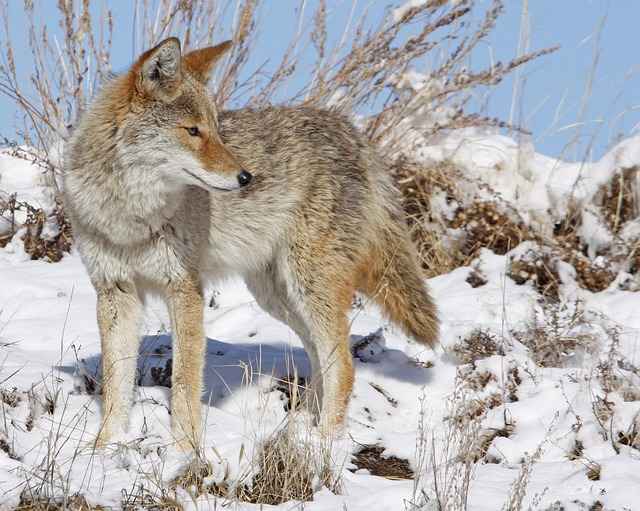
What Do I Do If My Dog Is Attacked by a Coyote?
If the worst happens, and your dog is attacked, you need to act immediately. Because a coyote’s bite could cause fatal damage to a dog, take your pet directly to the vet if it has been bitten.
Even if it doesn’t look like your dog has sustained serious injury from the coyote, it’s important to get it checked out in case the coyote may have transmitted a disease.
After you’ve taken care of your pet, report the incident to your local authorities. How they will handle the attack depends on the city and state.
Warn your neighbors as well and work together as a community to haze any coyotes that approach humans and avoid attracting them through unintentional feeding.
Can I Shoot the Coyote that Bit My Dog?
Hunting coyotes is legal, but the requirements vary in each state. Most states require a hunting license and many of them have certain season requirements. Be sure to look up your state’s requirements before attempting to shoot a coyote.
One important consideration when thinking about hunting coyotes, is that many studies have shown killing them does not decrease the number of coyotes in the area.
In fact, killing coyotes may even help increase their numbers. Since only alpha pairs breed, coyotes naturally maintain a certain number in their pack. When members of the pack are killed off, more coyotes may begin breeding, eventually creating more and larger packs. The best way to protect ourselves from coyotes is not to kill them, but to encourage them to avoid people.
Peaceful Coexistence with Coyotes
With fewer larger predators such as mountain lions and wolves to worry about, the coyote is showing no signs of stopping its spread. Whether we like it or not, coyotes are here to stay.
However, with some basic safety precautions, we can live securely, knowing our dog is safe. These precautions include keeping your dog indoors or monitored at all times, especially at night. Also, avoid attracting coyotes by keeping your property clear of possible food sources. If you do see a coyote approaching your or your property, haze them by yelling and making noise.
For extra protection, you can invest in a dog run or a coyote vest. Since these wild cousins of our pets are not going away any time soon, the best thing we can do is to protect our dogs by following these guidelines for peaceful coexistence.

